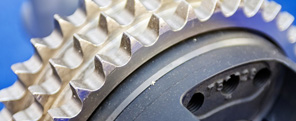 |
|||||||
|
The process of selectively removing metal from a blank part -- subtractive manufacturing -- has a long and venerable tradition in the manufacturing sector. So, too, do the metalworking fluids (MWFs) used to lubricate and cool a workpiece as it is machined. In recent times, manufacturing has put more focus on environmental sustainability. This, along with intense cost competition, has nudged machine shops away from the traditional concept of flooding a workpiece with MWF and toward a technology called MQL (Minimum Quantity Lubrication). MWF vs. MQL MQL Thermodynamics The working mechanism of MQL technology is such that the actual lubricant is almost completely consumed and vaporized in the process of cutting, leaving the part, the machine tool, and the area around it much cleaner and free of spilled coolant compared to when MWFs are used. Most importantly, this improves the working environment and benefits the health of workers, who are no longer subjected to the toxicity, bacteria, and fungal exposure that may accompany MWF machining. It also reduces the cost of cleaning finished parts and/or metal chips (swarf) before they can be recycled. MQL technology requires a dispensing mechanism for the lubricant, but it does not require the full re-circulating system required to recover, filter and re-apply MWFs to a machine tool. Additionally, MQL lubricants are generally based on esters or vegetable oils that are far less toxic to your workforce.
That's an excellent question, and we at Acculube invite you to call us for the answer, which varies with each machining application. We have seen it all, including the use of both MWFs and MQL technology on the same machine tool. As with any emerging technology, the adoption of MQL has been slowed by industry misconceptions that, for example, equate the volume of fluid with efficient cooling of the workpiece. In such a case, it is hard for experienced machinists to trust the concept that a few droplets of lubricant can go such a long way. Whereas an MWF operation might use tens of gallons of fluid during a shift, MQL technology requires just a few ounces.
|
|
||||||
|
|||||||
|
|||||||
Accurate Lubricants & Metalworking Fluids, Inc.• 403 Homestead Avenue; Dayton, Ohio 45417 USA • Phone: 937-461-9906 Fax: 937-461-9917
|
|||||||


